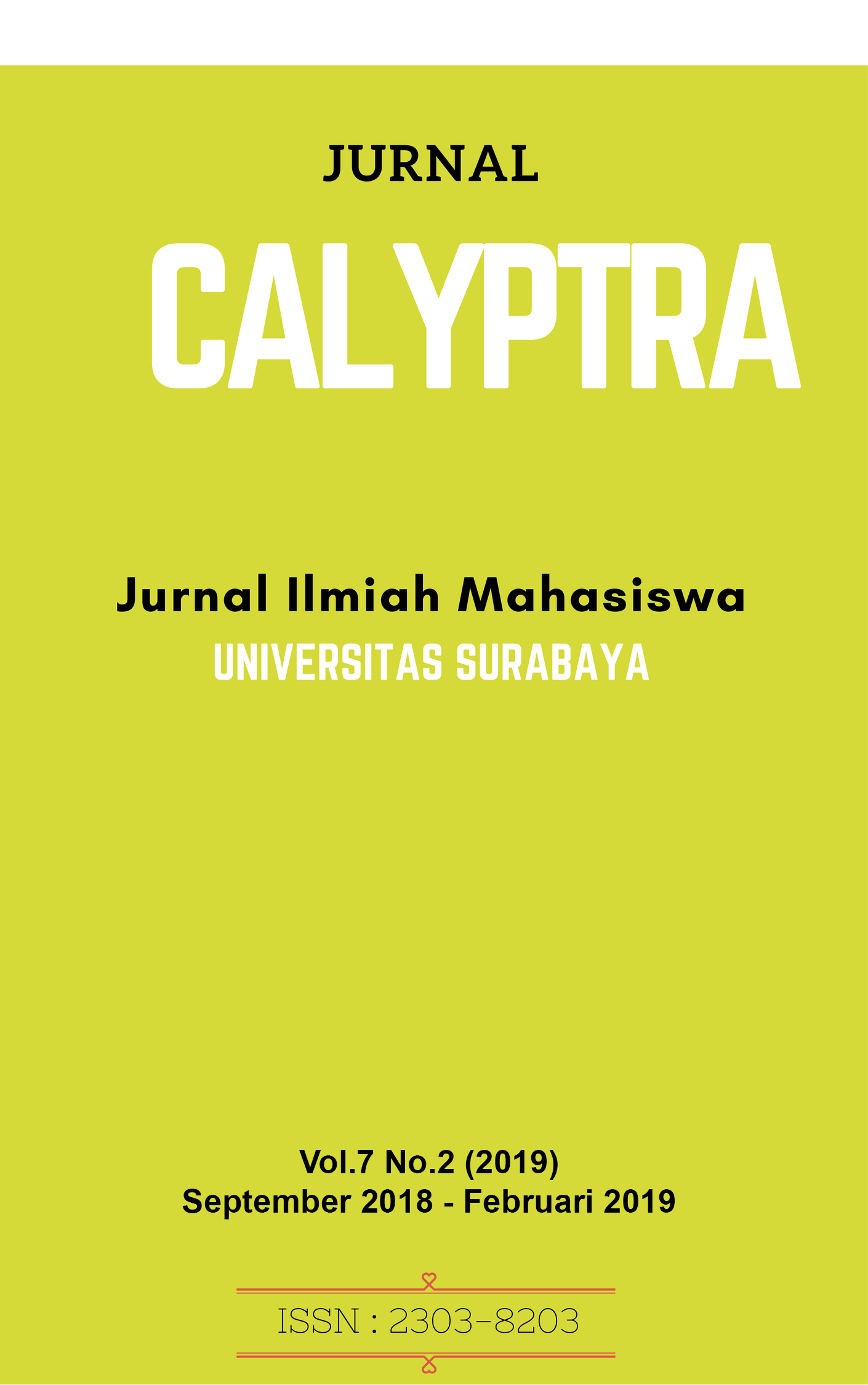AN EXPLORATION OF THE CULTURAL BELIEFS OF THE INDONESIAN AND CHINESE PEOPLE IN RELATION TO THE BUSINESS OF SWALLOW FARMING
 Abstract Views:
420 times
Abstract Views:
420 times
 PDF - FULL TEXT Downloads:
549 times
PDF - FULL TEXT Downloads:
549 times
Abstract
Abstract - This research is basic research that explores the public's trust in swallow farming business. Swiftlet nest is believed to have many benefits for health. Indonesia is the largest producer of swallow's nest in the world. Almost some of the swallow nest produced is exported abroad, especially to China. The purpose of this study is to discuss the reasons behind the belief that is expected to bring information to many people. So that people are able to think wisely and open in every business especially swiftlet nest business. While the method used by the author is qualitative methods by means of interviews, observation and analysis of documents in order to support the validity of the data. The main objects of the research are breeders, collectors and consumers of Swallow nest. The scope of this research is on cultural beliefs in Swallow farming based on Indonesia and China perpective. On the basis of the findings obtained during the study, researchers found that not all swallow nest businessmen believed in the belief. some of them might believe the impact of Swallow farming business but based on different reasons. It has been found not only from the Indonesian perpective but also in Chinese perpective.
Downloads
References
Apetrei, A. (2012). Standardization and adaptation of the organizational management – an intercultural approach. Unpublished doctoral dissertation. Alexandru Ioan Cuza University, Ia i, Romania.
Aswir, A. R., & Wan-Nazaimoon, W. M. (2011). Effect of edible bird‟s nest on cell proliferation and tumor necrosis factor (TNF-a) release in vitro. International Food Research Journal, 18(3), 1073–1077.
Chatman, J.A. and K.A. Jehn. "Assessing the relationship between industry characteristics and organizational culture: How different can you be?." Academy of Management Journal 37 (1994): 522–553.
Connolly, C., in press-a. Bird cages, and boiling pots for potential diseases: contested ecologies of swiftlet farming in George Town, Malaysia. J. Polit. Ecol
Jordan, David (2004). "Globalisation and Bird's Nest Soup". International Development Planning Review. Liverpool University Press. 26.
Kong, Y. C., Keung, W. M., Yip, T. T., Ko, K. M., Tsao, S. W., & Ng, M. H. (1987). Evidence that epidermal growth factor is present in swiftlet‟s (Collocalia) nest. Comparative Biochemistry and Physiology Part B: Comparative Biochemistry, 87(2), 221–226.
Koon, L. C., & Cranbrook, E. (2002). Swiftlets of borneo: Builders of edible nests. Sabah, Malaysia: Natural History Publications (Borneo) S.D.N., B.H.D.
Langham, N. (1980). Breeding biology of the edible-nest swiftlet Aerodamus Fuciphagus. Ibis, 122(4), 447–461.
Lau, Amy S. M.; Melville, David S. (April 1994). International Trade in Swiftlet Nests with Special Reference to Hong Kong. Traffic Network. ISBN 1-85850-030-3.
Law, A. S. M., & Melville, D. S. (1994). International trade in Swiflet nests with special reference to Hong Kong. Cambridege: Traffic International. 7–12.
Leung, C. Y. (2004). Three billions market competition for edible bird‟s nest shops. Economic Digest, 1197, 68–69
Schneider, Benjamin, ed. Organizational Climate and Culture. San Francisco: Jossey-Bass, 1990.
Thorburn, C., 2014. The edible birds‟ nest boom in Indonesia and South-East Asia: a nested political ecology. Food, Cult. Soc.: Int. J. Multidiscipl. Res. 17, 535–553.
Thorburn, C., 2015. The edible nest swiftlet industry in southeast Asia: Capitalism meets commensalism. Hum. Ecol. 43, 179–184. http://dx.doi.org/10.1007/ s10745-014-9713-1.
Wang, C. C. (1921). The composition of Chinese edible bird‟s nest and the nature of their proteins. Journal of Biological Chemistry, 49(2), 429–439.
Weick, Karl E. Sensemaking in Organizations. Thousand Oaks, CA: Sage, 1995.
Wu, Y., Chen, Y., Wang, B., Bai, L., Han, W. R., Ge, Y., et al. (2010). Application of SYBR green PCR and 2DGE methods to authenticate edible bird‟s nest food. Food Research International, 43(8), 2020–2026.
Wright, Gordon. "Realigning the Culture." Building Design & Construction 46, no. 1 (January 2005): 26–34.
- Articles published in CALYPTRA are licensed under a Creative Commons Attribution-ShareAlike 4.0 International license. You are free to copy, transform, or redistribute articles for any lawful purpose in any medium, provided you give appropriate credit to the original author(s) and the journal, link to the license, indicate if changes were made, and redistribute any derivative work under the same license.
- Copyright on articles is retained by the respective author(s), without restrictions. A non-exclusive license is granted to CALYPTRA to publish the article and identify itself as its original publisher, along with the commercial right to include the article in a hardcopy issue for sale to libraries and individuals.
- By publishing in CALYPTRA, authors grant any third party the right to use their article to the extent provided by the Creative Commons Attribution-ShareAlike 4.0 International license.



